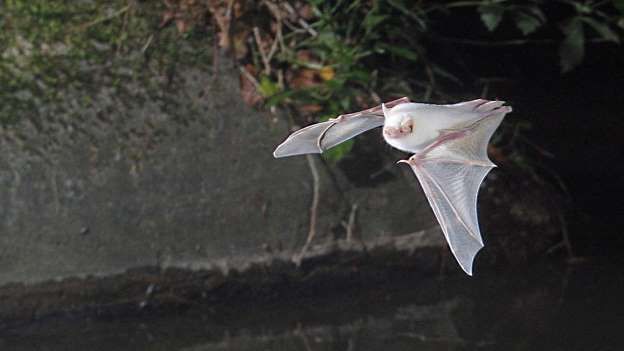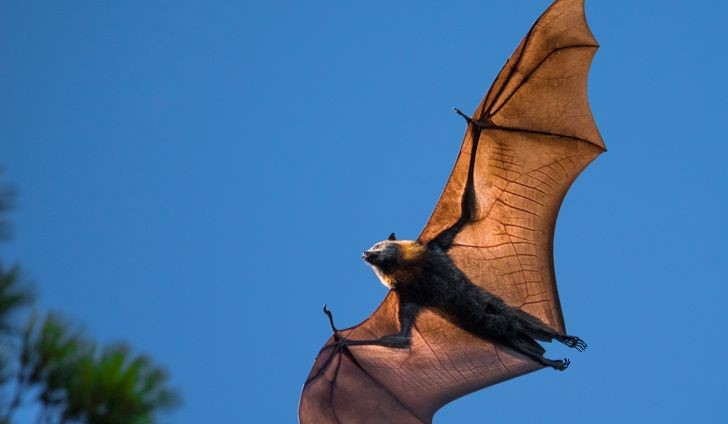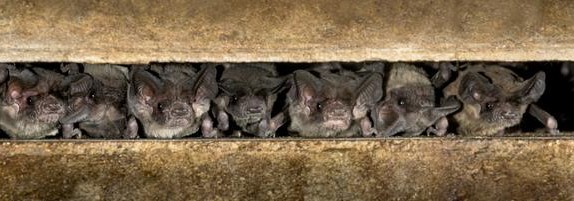Bats of Amaranth
Rumours that the city once enacted a curse to "...rid us of these filthy flying feathered fiends..." are unproven, but nonetheless, Amaranth is extremely poor in bird life. In their place, bats have taken control of the skies and high places of the city; roosting in the rafters, feasting on river insects and occasionally stealing sweet treats from market stalls.
Marble Bats
aka City Bats, Flying Rats
The most populous bat in the city, and the only purely diurnal one. With the same colouring as the white marble buildings of the city, they roost on overhangs, roofs and crevices during the night, relying on their camouflage to protect them from the more predatory bats. Large flocks of them can be sighted during the day, diving over slow-flowing parts of the river to catch dragonflies, mosquitoes and the like. Only occasionally do they interfere with people - opportunistically grabbing unattended fruits, but always avoiding confrontation. However, they are smart enough to work their way into storehouses, where they can be a more persistant nuisance until their entrance is found and covered. At various times, there have been calls to cull their numbers, but Hircus and his church have maintained that a glut of insects would be a much greater disturbance.Fox Bats
aka Hunting Bats, Hunters, Flamebolts
A crepuscular hunter; the Fox Bat is a much larger orange specimen, with up to a 1.5 metre wingspan and a set of wicked teeth and hind claws. Nicknamed 'Flamebolts' for the distinctive orange streak of their sudden dives, they mostly hunt Marble Bats at dusk and dawn, as they're heading to or from their roosts. Despite their preferred food source being plentiful, they're consummate scavengers; happy to eat an easier meal when they find it - washed-up fish or an exposed rodent, and many a citizen has been startled by a Fox Bat suddenly dropping to the street to pick up a rat. Though they prefer to steer clear of people, they will defend their nests vehemently, and the required size of their nests (usually restricting them to the more ornate parts of temples and churches) is probably the only reason they aren't more populous. Although they're usually lone hunters, they do occasionally work in packs, to corral larger flocks and this behaviour helps make them somewhat easier to train than other birds of prey, and a skilled handler might be able to command a flock of three to five effectively. Furthermore, their night-vision makes them more suitable for Amaranth's preferred battle times; either dusk, dawn or by the light of the moon.Wall Bats
So named for their preferred roost; the outer walls of Amaranth, these bats are much more typical of their wilder cousins - grey to brown, nocturnal and preferring to hunt out in the forests and thickets away from Amaranth. Their only deviation from the norm are the stubby claws on their hind legs, similar to the Fox Bats', but used for scraping out stone crevices to enlarge their nests. This habit of damaging the Amaranth walls for their roosts originally made them quite the enemy of the wall's masons, but since it's been repeatedly seen that the Wall Bats are usually the first creatures to notice the approach of Malthracion troops and scatter (whether day or night), some masons have started incorporating outward-facing alcoves into the crenelations - and they're now a much-appreciated early warning system.Remove these ads. Join the Worldbuilders Guild












Comments